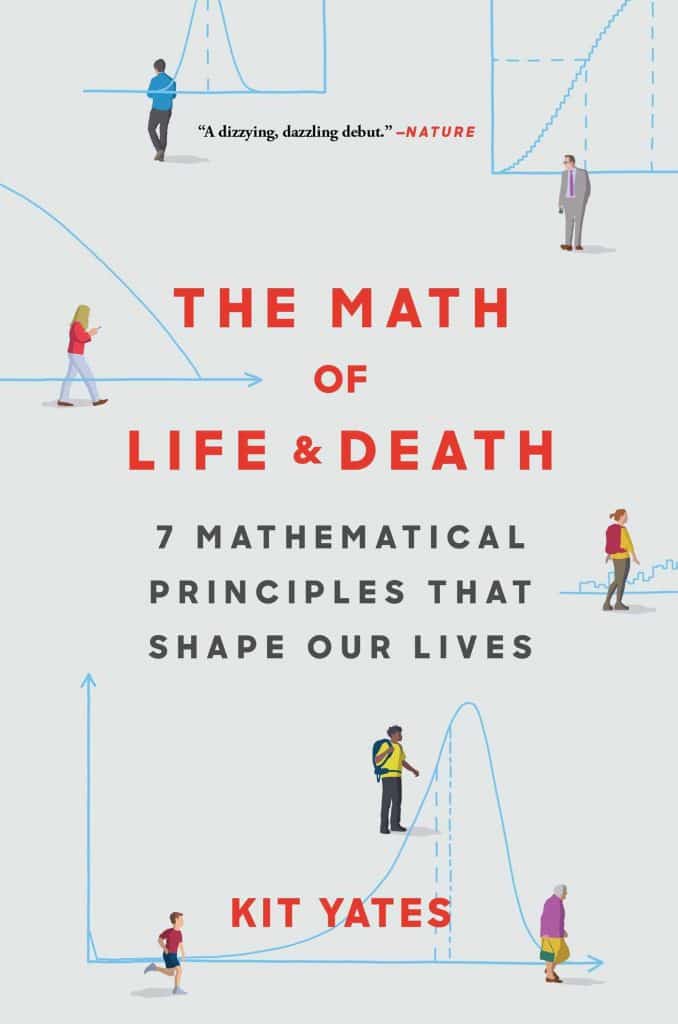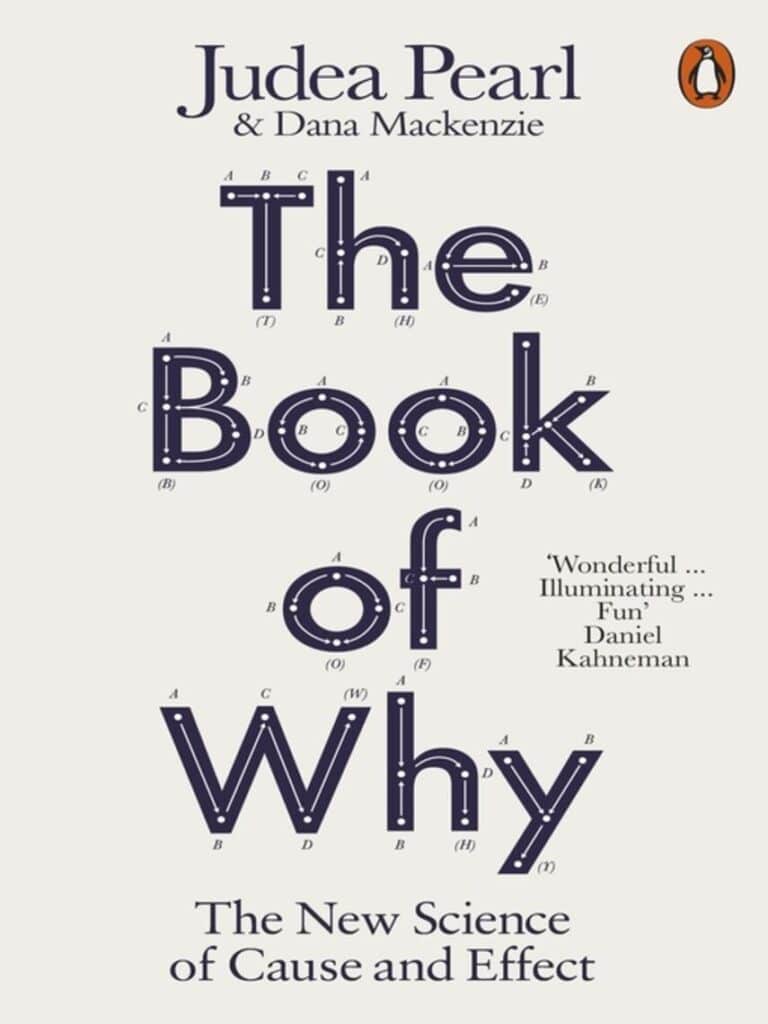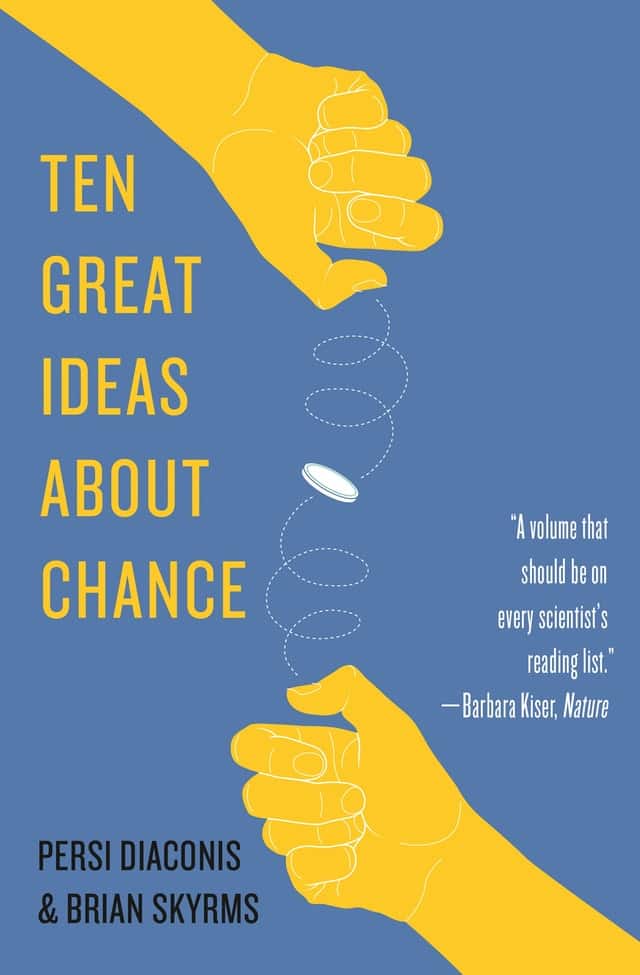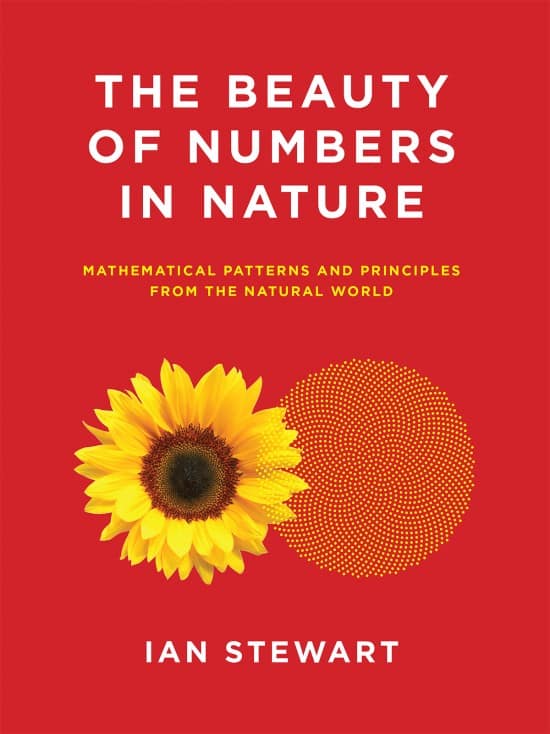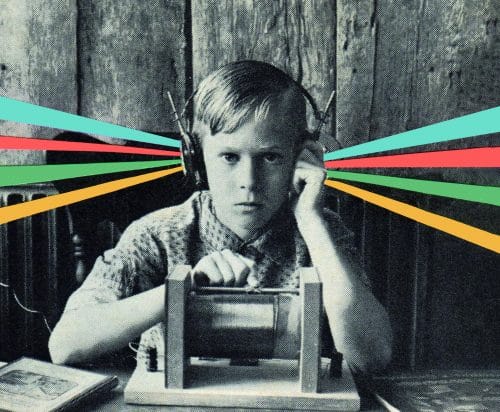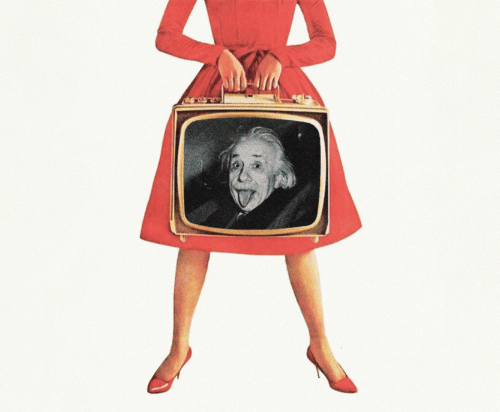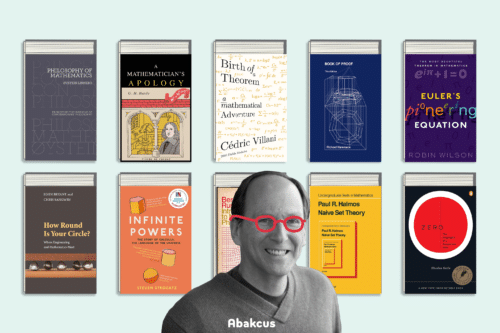For many, the mere mention of math can evoke feelings of frustration and confusion; however, beneath the surface of equations and graphs lies a world teeming with beauty and profound insights. “From Confusion to Clarity: 25 Books that Will Change How You See Math” is a curated collection designed not just for mathematicians but for anyone seeking to uncover the elegance and relevance of mathematics in our daily lives.
These books demystify complex concepts, illustrate the application of math in various fields, and share stories of mathematical discovery that inspire awe and wonder. Whether you’re a student grappling with algebra, a professional looking to sharpen your quantitative skills, or simply a curious mind, this list promises to transform your understanding and appreciation of math.
Some Advice for Your Math Approach
Before I start listing these transformative books, I want to address those of you who, like me, have found math a source of trouble throughout your educational journey.
The most significant barrier to mastering mathematics stems from deep-seated biases and anxieties. If you possess the mental sense to acquire reading and writing skills, you similarly have the capability to grasp the math taught in high school and college settings. This isn’t to deny the existence of natural aptitude; indeed, some individuals may grasp concepts more quickly or thoroughly than others, which is a separate consideration. It’s not a matter of becoming a mathematician per se, but rather, nearly everyone has the potential to learn a substantial amount of mathematical knowledge.
Mathematics is not an enigmatic or mysterious discipline reserved exclusively for the stereotypical image of eccentric geniuses. At its core, most foundational mathematical principles mirror the patterns and structures observed in nature. By adopting a more attentive perspective, one can realize that these concepts are intuitively aligned with the world around us.
Consider the right angle, so named for its universality and correctness in geometric structures. Similarly, probability isn’t a concept conjured from the ether by whimsical minds; it is a basic representation of likelihood based on observable outcomes in everyday life. The idea that the total probabilities of all possible outcomes in a situation add up to one is a principle that, with a bit of reflection, makes inherent sense. Mathematics, in essence, is accessible to anyone willing to explore its logic and beauty.
When approaching mathematics, cultivate a mindset of curiosity by frequently questioning, “Why?” Resist the temptation to settle for the notion that “this is the formula, and that’s just how it functions.” Behind every formula lies a foundation of simple concepts that have been previously established. With a bit of critical thinking, you can derive these formulas on your own.
Maintain an ongoing awareness of your mathematical process. For instance, when calculating a company’s potential profit, encountering a result that indicates a loss of one billion dollars should prompt a reconsideration of your approach—not an acceptance of a disastrously negative profit as the maximum. It’s crucial to exercise insight; I cannot count the number of times I’ve been exasperated to see interpretations of maximum profit as a negative figure in student papers.
Similarly, if a probability calculation yields a result of 100 percent, take a moment to critically assess what a “100 percent probability” truly implies.
That concludes the foundational mindset shift we aimed to nurture. The essence of this primary pep talk was to dismantle the rooted notion that math is an unconquerable beast surrounded by complexity and confusion.
25 Books that Will Make Math Sense

I hope this discussion serves as a beacon, guiding you away from such destructive preconceptions towards a place where math is viewed through a lens of curiosity and attainability. With this newfound perspective, we are now ready to explore and appreciate the incredible world of mathematics as presented in the forthcoming list of books.
Mathematical patterns influence every aspect of our lives, from our birthdays to birth rates to how we interpret the passage of time. In contrast, for those of us who left mathematics behind in high school, the numbers and figures thrown our way as we go about our daily lives might occasionally leave us scratching our brains and feeling as like we’re walking through a mathematical minefield. Kit Yates, a mathematician, reveals hidden principles that can assist us in understanding and navigating the chaotic and often opaque surfaces of our world in this eye-opening and incredibly accessible book.
A fascinating journey through everyday events and large-scale applications of mathematical principles, such as exponential growth and decay, optimization, statistics and probability, and number systems, is provided by Yates in The Math of Life and Death. Along the way, he shows the mathematical underpinnings of disputes such as those surrounding DNA testing, medical screening results, and historical events such as the Chernobyl accident and the Amanda Knox case. By the end of the book, readers will have gained a more enlightened perspective on current events and the law, medicine, and history. They will also be better prepared to make personal decisions and solve problems with mathematics in mind, whether it’s choosing the shortest checkout line at the grocery store or halting the spread of a deadly disease.
Jordan Ellenberg’s How Not to Be Wrong: The Power of Mathematical Thinking is a robust and enlightening exploration of the relevance and necessity of mathematics in our daily lives. Ellenberg, a mathematician himself, argues that a mathematical lens provides clarity and substance to the world around us, from the decisions we make to the phenomena we observe. The book straddles the line between being scholarly and accessible, making profound ideas palpably resonant for those who may have previously seen math as a static, insular field.
Ellenberg contends that the math taught in school is far more integral to the world than we typically acknowledge. Mathematics is not merely a collection of rules but a vital mechanism for understanding life’s complexities. The book dives into practical applications such as optimizing airport arrival times, interpreting public opinion polls, genetics, political forecasts, and even the odds of developing certain diseases.
The author isn’t content with keeping math in the realm of pure theory or within the confines of classrooms. Instead, he advocates for its practical application, presenting it as a tool for critical thinking and problem-solving that spans many disciplines. Mathematics, in Ellenberg’s view, helps us make informed decisions and uncovers the truth beneath muddled data and misinformation.
How Not to Be Wrong cuts through various topics with mathematical threads, discussing everything from sports to politics, from psychological research to the potential existence of God. He bridges abstractions with tangible examples and stories, lending an air of adventure to the subject matter.
Jordan Ellenberg writes with an engaging and narrative-driven style that manages to be witty and forthright. His explanations are laced with humor and relevancy, avoiding the pitfalls of dense jargon that could alienate non-mathematically inclined readers. The book stands out for its ability to relate complex mathematical concepts to a broad audience, encouraging readers to consider the impacts of these concepts in new and varied contexts.
The use of historical anecdotes and modern dilemmas serves to ground mathematical theories in the real world, allowing readers to grasp their implications fully. Ellenberg’s storytelling prowess makes for a compelling read that is both educational and entertaining.
How Not to Be Wrong is a triumph of popular math writing, serving as both an illuminating guide for the layman and a thoughtful reflection for those more familiar with the subject. Whether you’re a math enthusiast, a professional mathematician, or someone who has shied away from numbers since high school algebra, there’s enriching insight to be found in these pages.
This book is not just about mathematics; it’s about how we think and how we can use mathematical thinking to not be wrong—or at least to be wrong less often. It’s an essential read for anyone who wants to understand the significant role math plays in our world and how it can be used to enhance our everyday decision-making.
Jordan Ellenberg’s work is an eloquent reminder of the power and scope of mathematics. It carries an empowering message that mathematical thought is not an elite privilege but an accessible asset ready to amplify humanity’s collective common sense. I wholeheartedly recommend How Not to Be Wrong to anyone and everyone. It is a revelation that the world is indeed “shot through with” math, and understanding it just a little bit more can profoundly affect our perspective on practically everything.
When it comes to statistics, we’ve all heard the phrase “correlation is not the same as causation.” But what does that really mean? Well, if two variables are correlated, it could mean that one causes the other, or maybe they both have a common cause. Figuring out the true cause and effect relationship can be tricky, especially when it’s not possible to conduct controlled experiments.
In “The Book of Why,” Judea Pearl offers a new perspective on causality. He introduces the use of graphical models to represent causal relationships between variables. By analyzing these causal graphs, we can determine if they align with the available data and develop strategies for controlling confounding variables. With this approach, Pearl takes us beyond simple associations and enables us to answer questions like “What would happen if we increased X?” or “How can we adjust X to get more of Y?”
But Pearl’s work isn’t just relevant to statistics and research. In the last chapter, he explores the implications of his approach for artificial intelligence (AI). While AI has made great strides using correlation-based statistical methods, Pearl argues that true AI requires incorporating causal inference. Without causal understanding, AI systems are limited.
“The Book of Why” is written for a general audience, making it accessible to anyone interested in causality. Pearl explains his approach using relatable examples from various fields, making the concepts easy to grasp. Additionally, the use of causal diagrams helps bridge the gap between technical and non-technical audiences.
It’s important to note that while “The Book of Why” provides an excellent introduction to Pearl’s approach, it may not be suitable as a textbook or reference guide. For readers seeking a more in-depth understanding, Pearl’s other works, such as “Causal Inference in Statistics: A Primer” and “Causality: Models, Reasoning and Inference,” offer more detailed explanations. Additionally, for those interested in alternative approaches, “Counterfactuals and Causal Inference” by Morgan and Winship is worth considering.
Overall, “The Book of Why” is a captivating exploration of the challenges of causality and an invaluable resource for those looking to delve into the world of causal inference.
Douglas W. Hubbard’s How to Measure Anything: Finding the Value of “Intangibles” in Business is a remarkable book that captures the essence of quantification in the business world. It’s a must-read for professionals across industries who find themselves grappling with the elusive challenge of measuring seemingly immeasurable concepts.
At its core, Hubbard’s book is about shedding light on the supposedly dark art of measurement. He argues cogently that there’s nothing in business that can’t be measured, be it customer satisfaction, organizational flexibility, technology ROI, or even the value of corporate leadership. The key themes revolve around demolishing the myth that certain things are immeasurable and offering a concrete methodology for turning intangibles into measurable quantities.
One cannot help but appreciate the way Hubbard makes a typically dry subject – business statistics – engaging and relevant. Peter Tippett, the inventor of the first antivirus software, praises Hubbard’s work for creating a pathway to better knowledge. Peter Schay of The Advisory Council recommends the book’s powerful, practical techniques – a sentiment echoed by many readers who have found Hubbard’s methods directly applicable to their decision-making processes.
Ray Gilbert from Lucent praises the book for bridging the gap between academic statistics and applied business practices. What stands out in these endorsements is the clarity of Hubbard’s style and the range of his measurement applications.
Hubbard doesn’t simply argue that everything can be measured; he shows how to do it. His strategies include calibrating better estimates and understanding the value of information before deciding on how and what to measure. These valuable lessons steer away from the clichés of business rhetoric and move towards actionable, evidence-based decision-making.
How to Measure Anything demystifies the complexities associated with risk, uncertainty, and decision-making within business environments. It reveals the often underestimated power of measurement to provide crucial insight and significantly alter our understanding of a problem.
Douglas W. Hubbard’s How to Measure Anything is insightful, useful, and surprisingly accessible. Whether you’re a manager, analyst, consultant, or student of business, this book will change your perception of measurement. It challenges preconceived notions with robust, analytical thinking and provides readers with the tools to measure and improve their endeavors in practical, meaningful ways. It’s an indispensable guide for anyone seeking informed, less risky, and more profitable business decisions.
In our search for self-improvement and life guidance, we often turn to a familiar counsel – our gut feelings. But in “Don’t Trust Your Gut: Using Data to Get What You Really Want in Life,” Seth Stephens-Davidowitz questions the wisdom of such instincts. The former Google data scientist and economist makes a compelling case for relying on big data over intuition when making some of life’s most critical decisions.
The book is artfully structured around the principle idea that contrary to popular belief, our gut instincts are neither as informed nor as unbiased as we like to think. Stephens-Davidowitz takes readers on a data-driven exploration that includes everything from the strategies of successful dating profiles to the best locales for raising a family based on tax records.
He asserts that the trail of data breadcrumbs we leave behind in our digital age can reveal more about the strategies for success and happiness than any self-help book based on anecdotal evidence. With big data research at the helm, Stephens-Davidowitz analyzes patterns and trends, boiling them down to practical advice that is both understandable and surprising.
What stands out in “Don’t Trust Your Gut” is the author’s prowess in translating vast and complex datasets into engaging and actionable insights. He employs the storytelling zeal of a detective, revealing how data has debunked the efficiency of widely held beliefs in areas as diverse as career success and relationship satisfaction.
The book challenges readers to shift their perspectives and trust in the revelatory power of figures and facts. Still, it is worth noting that, while Stephens-Davidowitz makes a robust case for data-led decision-making, he does not entirely dismiss the value of human emotion and experience. Instead, he presents data as a tool to supplement, not replace, the richness of human judgment.
The narrative is rich with anecdotes and humor, ensuring that what could easily become a dry recitation of figures is instead a lively discourse. One might argue whether Stephens-Davidowitz’s enthusiasm for data may sometimes overshadow the complexities of human emotion that cannot be easily quantified. Nonetheless, the book opens up an essential discussion about balancing data and lived experience in decision-making.
“Don’t Trust Your Gut” invites readers to reconsider how they approach self-improvement and life-changing choices. In addition to delivering surprising conclusions about what data can tell us about achieving a better life, it serves as a guide for navigating the endless sea of information that characterizes the modern world.
For anyone interested in the intersection of big data and personal growth, this book offers a fresh perspective that is both thought-provoking and potentially life-changing. Stephens-Davidowitz doesn’t just furnish readers with data; he gives them a new lens through which to view their decisions and their lives. This blend of data, economics, and self-help is a potent combination, making “Don’t Trust Your Gut” a vital read in an increasingly data-driven age.
In “The Man Who Solved the Market,” Gregory Zuckerman offers a detailed account of perhaps the most successful, yet enigmatic figures in the world of finance—Jim Simons. Constructed through extensive research and interviews, this book captivates the reader with the narrative of a mathematician turned finance mogul whose innovative techniques paved the way for the quant revolution that would forever change the industry.
At its core, this book is a testament to human ingenuity and the power of applying mathematical precision to the rough-and-tumble world of investing. It elucidates fundamental themes such as the relentless pursuit of knowledge, the intersection of technology and finance, and the unforeseen consequences of disrupting established industries.
Simons, a distinguished mathematician and a former code breaker, ventures into finance and establishes his firm, Renaissance Technologies. There, he and his team of analysts, mathematicians, and computer scientists craft the Medallion Fund—a fund that achieves unprecedented success through algorithmic trading.
But the plot thickens as Zuckerman unravels how Renaissance’s strategies extend beyond markets. The firm’s executives exert influence on crucial political outcomes, highlighting the often-ignored nexus between financial power and political dynamics. The enigmatic figure of Robert Mercer appears, threading in the controversial twists of the modern political landscape.
Zuckerman’s narrative prowess never diminishes the complexity of financial strategies to simplistic anecdotes. Instead, the reader is treated to a lush mix of Simons’s personal life, mathematical rigor, and the quirkiness of a team that consisted of astronomers and cryptographers alongside traditional market researchers.
The book reads like a thrilling novel, yet it serves as a scholarly record of quantitative analysis’s rise to prominence. For readers interested in the tumultuous years that reshaped financial markets, this text is both an engaging tale and an edifying exposition of quantitative finance.
“The Man Who Solved the Market” is a fascinating portrayal of how one man’s vision transformed the world of finance. Zuckerman triumphs in demonstrating that behind the cold algorithms and data that dictate the pulse of markets are human stories of ambition, curiosity, and unintended consequences.
As much as it is a reflection on success, the story of Renaissance poses ethical questions regarding the role and influence of such firms. The book subtly probes the reader to consider the broader impact of finance on society and how individuals like Simons and firms like Renaissance craft our world, often from the shadows.
Amidst soaring profits and revolutionary approaches, it’s a tale of immense success shadowed by a stark reminder that every action, especially in a high-stakes environment like Wall Street, triggers ripples that resonate far and wide. A recommended read for anyone intrigued by the amalgamation of intellect, technology, and finance, and their role in shaping the modern era.
In an era where data is king, Kaiser Fung’s “Numbers Rule Your World” emerges as a compelling guide to the silent but significant role that statistics and probabilities play in our daily lives. Building upon the lineage of bestsellers like “Freakonomics” and “Super Crunchers,” Fung demystifies the numerical forces shaping everything from our health to our work environment, bringing statistics to life through engaging narrative and real-world examples.
The book’s exploration of key themes offers a profound look at the odds controlling diverse aspects of our existence – from winning the lottery to the functioning of traffic systems. With expert storytelling, Fung draws the reader into the “hidden world of facts and figures,” illuminating how these numbers influence our life without our conscious realization.
One of the book’s most laudable feats is Fung’s ability to articulate complex statistical principles in an understandable and enjoyable manner. His writing resonates with a broad audience, from seasoned statisticians to curious novices. The author eschews dense mathematical formulas in favor of conversational prose filled with insightful anecdotes, making the book an accessible foray into statistical thinking.
Fung doesn’t merely elucidate abstract concepts; he shows how they manifest in real-world applications. From the metrics behind standardized testing fairness to corporations predicting consumer needs, the author reveals the extensive research and data analysis silently but significantly guiding decisions and outcomes.
While the book fascinates and informs, it also doesn’t shy away from the power and potential misuse of statistics. It challenges the reader to consider the implications of reliance on numerical analysis in critical decision-making processes and prompts a thoughtful evaluation of how we interpret the data driving our society.
Critics and thought leaders alike have praised Fung’s work for its clarity and relevance. Fareed Zakaria hailed it as “an easy read with a big benefit,” while others like Daniel Finkelstein commend it as the key to unlocking logical thinking without the trappings of complex equations.
“Numbers Rule Your World” is more than just a book about statistics; it’s a riveting narrative of how numbers configure the tapestry of our lives. It enlightens, entertains, and educates, making us better informed about the unseen statistical mechanisms in play. For anyone seeking to appreciate the myriad ways in which data shapes our reality, Kaiser Fung’s book is an invaluable addition to your library.
For those looking to appreciate the omnipresence of data analytics or to those with trepidation about how it affects our world, Fung’s explorations into the good and bad of predictive analytics will provide much-needed context and insightful discourse. Whether the revelations surprise, amuse, or provoke, there is no denying the central thesis that indeed, numbers rule your world.
Discover the fascinating world of equations in “In Pursuit of the Unknown: 17 Equations That Changed the World” by Ian Stewart. Whether you’re a math phobe or a research mathematician, this book promises to captivate you with the poetry and beauty of significant equations. Brace yourself for a thrilling journey through the ascent of humanity, as Stewart unravels the secrets behind 17 equations that have truly transformed our world.
Prepare to be amazed as Stewart effortlessly breaks down complex equations from mathematics, physics, information theory, and finance in a way that anyone can understand. From Maxwell’s equations that birthed radio and wireless communication, to Newton’s law of gravity that led to the Hubble telescope and GPS, these equations have shaped our lives in ways we never imagined.
But don’t worry, In Pursuit of the Unknown isn’t all about equations and technical jargon. Stewart incorporates plenty of pictures and engaging prose to keep you hooked. Each chapter focuses on a different equation, giving you a comprehensive history, explanation, and significance of the equation. With helpful graphics and concise answers to key questions, you’ll feel confident in your understanding and eager to learn more.
Delving into the lives of the mathematical greats behind these equations, Stewart adds a touch of human-interest to the mix. You’ll meet fascinating characters like Cardano, the gambling scholar, and uncover how their discoveries have impacted our world.
Even experienced mathematicians will find something new in “In Pursuit of the Unknown.” Stewart’s approach showcases how to write about mathematics for a wide audience while providing deep insights into the profound influence of equations on modern civilization.
Whether you’re studying math, interested in history, or simply seeking an enjoyable read, In Pursuit of the Unknown is a must-have. Stewart’s inviting tone, comprehensive content, and compelling arguments breathe life into those enigmatic mathematical objects we call equations. Get ready to be amazed and inspired by the incredible power these equations possess.
The concept of chance was once a mystery, but in the sixteenth and seventeenth centuries, gamblers and mathematicians transformed it into the field of probability, paving the way for a string of innovations that enabled or revolutionized countless industries, ranging from gambling to mathematics to statistics, economics, and finance to physics and computer science. This book discusses ten brilliant theories about chance, along with the intellectuals who produced them. Ten Great Ideas about Chance is sure to be a favorite with everyone who wants to comprehend the mysteries of probability and how they were found, complete with a brief probability refresher.
“Nature is abundant with patterns supported by mathematical concepts, such as the stripes on a zebra, the web of a spider, sand dunes, and snowflakes. In his book The Beauty of Numbers in Nature, Ian Stewart demonstrates how life arises from mathematical principles. The Beauty of Numbers in Nature examines several patterning systems and their mathematical foundations in each chapter. The book also reveals several common patterns that may be seen in both natural and human-made structures, ranging from the simple geometry of classical Greece to the intricate intricacy of fractals.
Stewart examines the mathematics of patterns by drawing on a variety of sources, including the Pythagoreans’ obsession with numbers as the philosophical foundation of the universe, a great mathematician who pondered how a violin makes music, a patent office clerk who realized that space and time could be mixed up, and a rebellious mathematician who questioned why nature shuns such regular geometric shapes as spheres and cylinders in favor of jagged lightning bolts and asy
The book opens with a straightforward and frequently posed query regarding snowflakes’ design and individual uniqueness. How can a tiny amount of frozen water contain such an odd combination of regularity and irregularity? Readers will have discovered by the book’s conclusion that mathematical patterns can take on many different forms, some of which bear no resemblance to patterns at all.”


